Raevenlord
News Editor
- Joined
- Aug 12, 2016
- Messages
- 3,755 (1.20/day)
- Location
- Portugal
| System Name | The Ryzening |
|---|---|
| Processor | AMD Ryzen 9 5900X |
| Motherboard | MSI X570 MAG TOMAHAWK |
| Cooling | Lian Li Galahad 360mm AIO |
| Memory | 32 GB G.Skill Trident Z F4-3733 (4x 8 GB) |
| Video Card(s) | Gigabyte RTX 3070 Ti |
| Storage | Boot: Transcend MTE220S 2TB, Kintson A2000 1TB, Seagate Firewolf Pro 14 TB |
| Display(s) | Acer Nitro VG270UP (1440p 144 Hz IPS) |
| Case | Lian Li O11DX Dynamic White |
| Audio Device(s) | iFi Audio Zen DAC |
| Power Supply | Seasonic Focus+ 750 W |
| Mouse | Cooler Master Masterkeys Lite L |
| Keyboard | Cooler Master Masterkeys Lite L |
| Software | Windows 10 x64 |
MSI's CEO Charles Chiang, quoted by Tom's Hardware at COMPUTEX 2019, laid out what we were already seeing with motherboard designs from all vendors of AMD's X570-based motherboards: pricing is likely increasing across the board, and AMD's market positioning won't be of the alternative, lower-value brand.
As quoted, Chiang said that ""Lots of people ask me, what do you think about today's AMD? I say today's AMD is completely different company compared to two, three, five years ago. They have nice technology and they are there to put the higher spec with the reasonable pricing. But right now they say, "Hey Charles, let's push to marketing to the higher [end]. So let's sell higher-pricing motherboards, higher-spec motherboards, and let's see what will happen in the market. So I don't think that AMD is the company that wants to sell low cost here, low cost there." Which does make sense: AMD isn't in the position of the underdog anymore -at least technology and product-portfolio wise when it comes to consumer CPUs. With better products, comes a desire for higher margins, and a change in direction for a company that was basically forced to almost cut itself out of the market in terms of profits with its previous, non-competitive CPU designs.

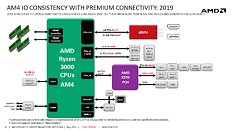
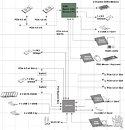
Efforts to survive on AMD's part have been immense, with the company severely tightening its belt in all fields, including R&D, in the times leading to the launch of their previous-gen architecture, Bulldozer. And with the way that one architecture panned out in the market, AMD didn't really find a way to dig itself out of the trenches. No like it has with Zen: a lithe, small, highly efficient design that allowed the company to not only make up lost ground on technology and CPU performance but also on profits. That the company wants to price its products in higher segments, alongside their performance improvements and competitiveness against Intel's slow-moving lineup, makes all sorts of sense from a business perspective.
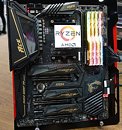
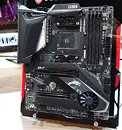
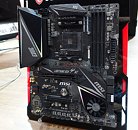
Charles Chiang said that there a multitude of factors contributing to the higher pricing of X570 motherboards: that AMD is planning to charge more for each chipset (compared to the ASMedia-designed X470), but also because of the integration of PCIe 4.0. PCIe 4.0 support has meant a higher-TDp chipset (which has required a throwback to the days of old with active cooling over AMD's chipset, which has increased its TDp up to 10 W compared to the previous gen's X470's 3 W); and because PCIe switches are another best entirely in terms of complexity and power delivery capabilities. All of these add cost, and this cost will end up being passed on to end users (at least partially): as it always is.
View at TechPowerUp Main Site
As quoted, Chiang said that ""Lots of people ask me, what do you think about today's AMD? I say today's AMD is completely different company compared to two, three, five years ago. They have nice technology and they are there to put the higher spec with the reasonable pricing. But right now they say, "Hey Charles, let's push to marketing to the higher [end]. So let's sell higher-pricing motherboards, higher-spec motherboards, and let's see what will happen in the market. So I don't think that AMD is the company that wants to sell low cost here, low cost there." Which does make sense: AMD isn't in the position of the underdog anymore -at least technology and product-portfolio wise when it comes to consumer CPUs. With better products, comes a desire for higher margins, and a change in direction for a company that was basically forced to almost cut itself out of the market in terms of profits with its previous, non-competitive CPU designs.



Efforts to survive on AMD's part have been immense, with the company severely tightening its belt in all fields, including R&D, in the times leading to the launch of their previous-gen architecture, Bulldozer. And with the way that one architecture panned out in the market, AMD didn't really find a way to dig itself out of the trenches. No like it has with Zen: a lithe, small, highly efficient design that allowed the company to not only make up lost ground on technology and CPU performance but also on profits. That the company wants to price its products in higher segments, alongside their performance improvements and competitiveness against Intel's slow-moving lineup, makes all sorts of sense from a business perspective.



Charles Chiang said that there a multitude of factors contributing to the higher pricing of X570 motherboards: that AMD is planning to charge more for each chipset (compared to the ASMedia-designed X470), but also because of the integration of PCIe 4.0. PCIe 4.0 support has meant a higher-TDp chipset (which has required a throwback to the days of old with active cooling over AMD's chipset, which has increased its TDp up to 10 W compared to the previous gen's X470's 3 W); and because PCIe switches are another best entirely in terms of complexity and power delivery capabilities. All of these add cost, and this cost will end up being passed on to end users (at least partially): as it always is.
View at TechPowerUp Main Site






